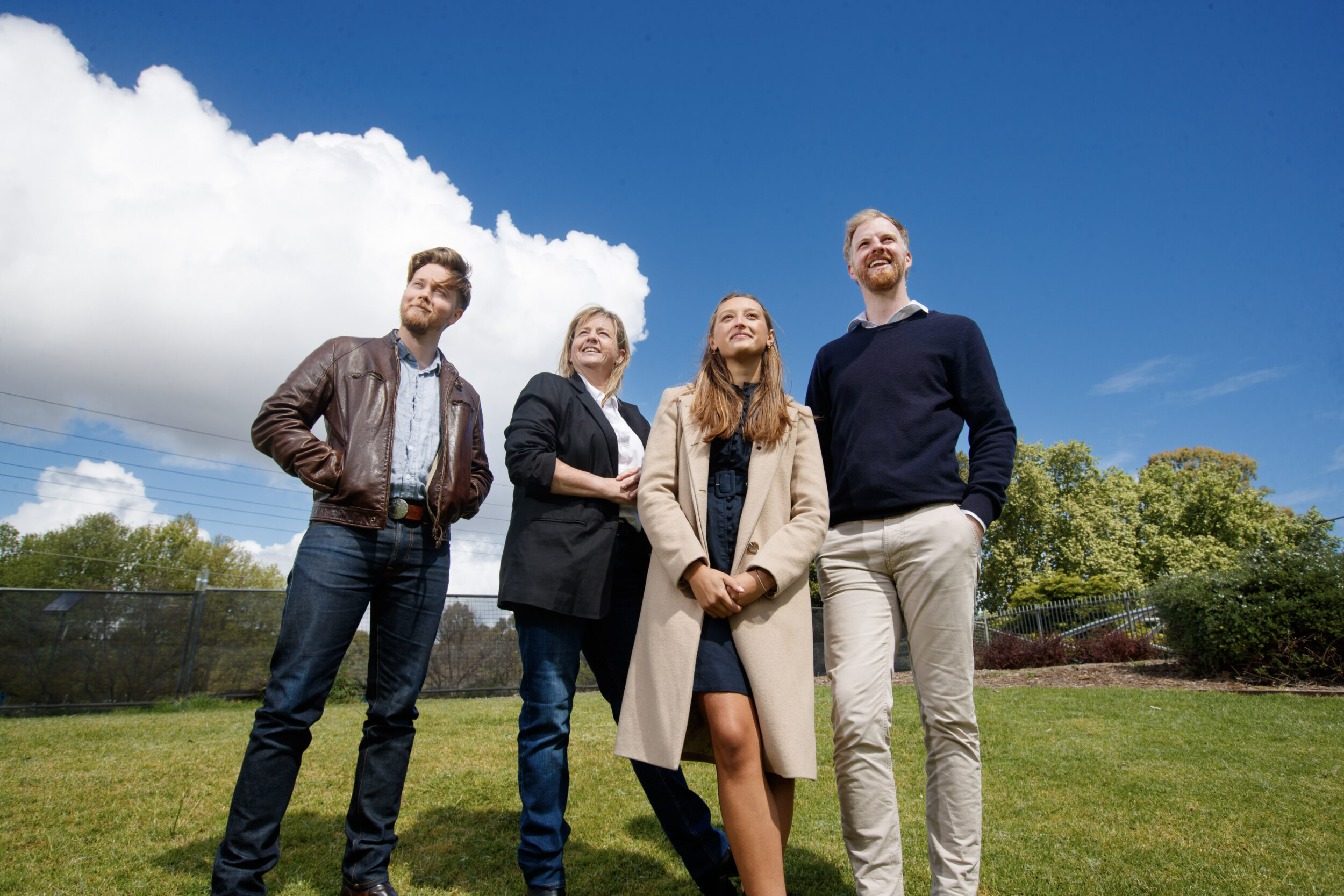The tweet, a love story and the global race to decarbonise
Posted November 20, 2023

You’ll remember the story. It sounds implausible: two billionaires, one bet and a world-first (and largest at the time) grid-scale battery installation. Global media attention was set firmly on South Australia in the global race to decarbonise in the face of climate change.
In March 2017, Atlassian’s Mike Cannon-Brookes challenged Elon Musk to follow through on a statement suggesting Tesla batteries could solve South Australia’s energy issues, after the state had dealt with several black-outs. In a Twitter exchange, Musk responded, “Tesla will get the system installed and working 100 days from contract signature or it is free.”
And, long story short, the battery was delivered to deadline in South Australia’s Mid North on the edge of the famed Flinders Ranges.
Six years on, Musk has moved onto other high-profile endeavours, and South Australia continues to forge ambitious new pathways to decarbonisation.
The state is at the vanguard of the global energy transition, having transformed our energy system from one percent to over 70 percent renewable energy in just over 20 years, with a target of 100 percent net renewable energy by 2030.
Lot Fourteen-based business, Neoen, is the owner and operator of the Tesla-built battery, which is now known as the Hornsdale Power Reserve, as well as the adjacent Hornsdale Wind. In its first year of operation, the power reserve reduced the price of frequency regulation services in South Australia by 75 percent, which has saved Australians $150 million in the first two years of operation, the company reports.
Neoen is the leading French independent producer of renewable energy and a major player on the world stage.
The company develops, owns and operates solar, wind and battery storage projects across the country and is a specialist independent power producer generating renewable energy, sustainably, at scale.
They’re also the first company to pass 3GW of renewable energy capacity in Australia. Operating in 17 countries globally, it has a goal to reach 10GW of capacity worldwide by 2025.
The 90-plus Australian team celebrated ten years of success in Australia last year. Over this time, the landscape has changed rapidly as the world races to decarbonise. Projects in Australia are getting bigger and more complex.
Neoen has a soft spot for South Australia, which hosts nearly a third of Neoen’s Australian assets. Neoen Australia CEO Louis de Sambucy, recently quoted in Energy Insiders, a RenewEconomy podcast, that Neoen has, “a love story with South Australia,” with their first projects being based in the state.
“First, let me say that what’s fascinating, is here in Australia is the speed of the transition of renewable energy,” he told Energy Insiders.
“In South Australia, to achieve 70 per cent penetration is kind of a world record.
“We are building the solutions that are necessary with storage, but not only storage to supply energy when its needed, but storage to help run the grid when you have a higher renewable energy percentage.”
The company has several projects at differing stages in South Australia, including one of the biggest hybrid projects in Australia – the $6 billion Goyder South project, which has approval for 1200 MW of wind, 600 MW of large scale solar, and battery storage of up to 900 MW and 1800 MWh. Stage 1 of this project – 412MW of wind generation – is currently under construction near Burra, about 160km north of Adelaide.
Another project currently under construction, the Blyth Battery also in South Australia’s Mid North, will mainly be deployed in combination with Neoen’s Goyder South Stage 1 wind farm to deliver 70 MW of renewable baseload energy for BHP’s Olympic Dam operations, one of the world’s most significant deposits of copper, gold and uranium.
De Sambucy is excited about the project, with the wind farm to be the biggest in South Australia.
“Goyder is a world-class project and one of our best projects worldwide,” he says
And discussing the whole project, “the project is so big, so we are also looking at hydrogen,” he states.
“We’ve made the decision on hydrogen to focus on this one project…because Goyder has the best fundamentals in our portfolio.
“So, we’ve set up an MOU with Japanese company ENEOS and we are progressing a feasibility study to see what we could do with a monster project like Goyder,” he told Energy Insiders.
Neoen has recently started transporting the 75 giant turbines for the wind project from their location in Port Adelaide to their final destination, 344km away. The delivery program, including turbine blades (each around 75m long), tower sections, nacelles, drive trains and hubs will take a year.
Australia passed the Climate Change Act in 2022, which doubles the target for emissions reductions by 2030 and sets the goal of reaching net zero emissions by 2050.
To keep global warming to no more than 1.5°C – as called for in the Paris Agreement – emissions need to be reduced by 45 percent by 2030 and reach net zero by 2050, adopted by 196 Parties, including Australia, at the UN Climate Change Conference (COP21).
Read more stories like this on Issue_02 of Lot Fourteen’s Boundless Magazine.
Great things come to those who subscribe
Subscribe
"*" indicates required fields
Adelaide 5000
Developed by Frame Creative
Design by The Sideways Theory
Design by Sixth Street Design
Developed by Frame Creative
© Lot Fourteen All Rights Reserved

